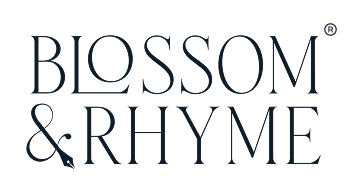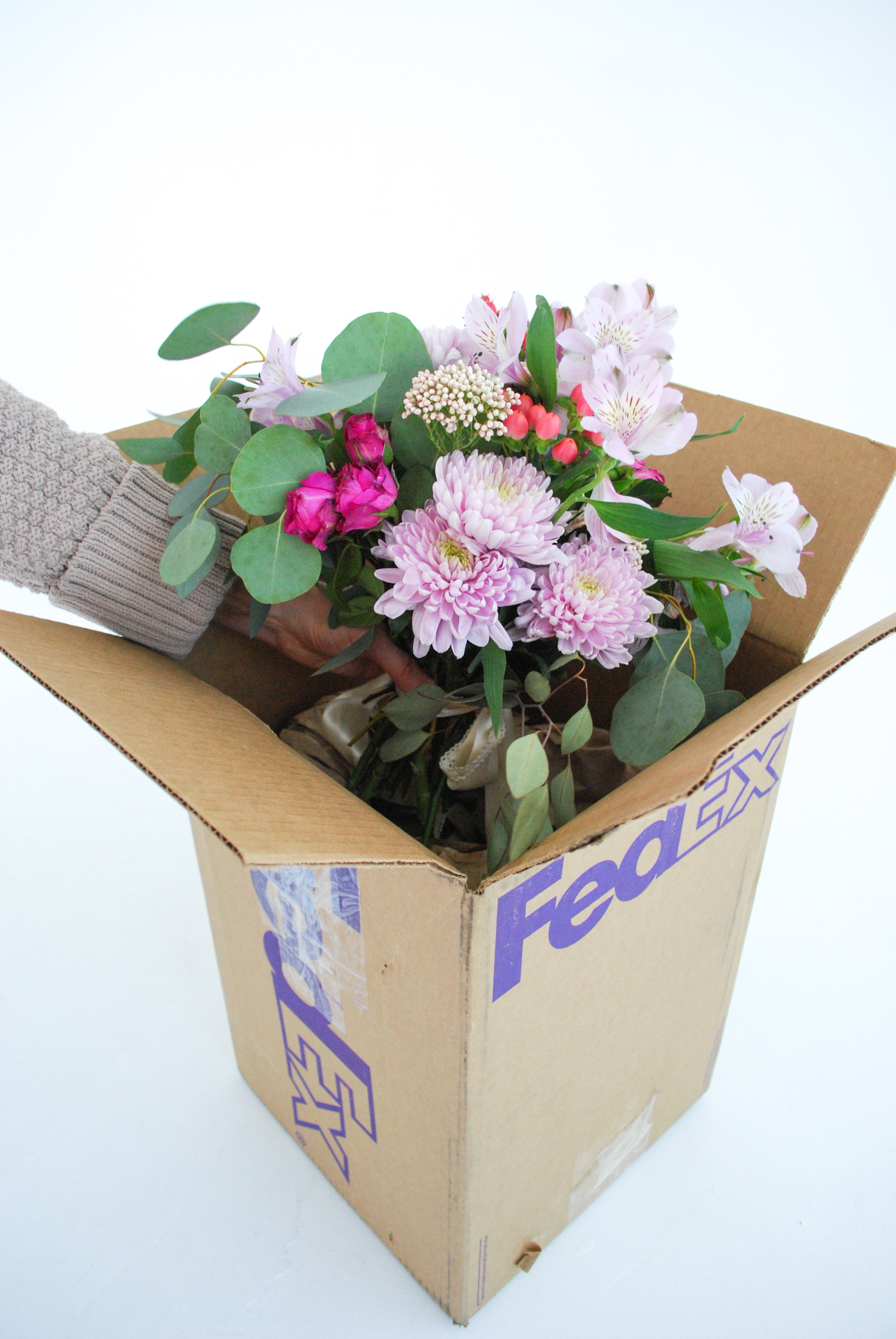Floral arrangements are the heart of your wedding aesthetic. Whether you’re keeping it intimate with a few hand-tied bouquets or going full-on floral fantasy with centerpieces, installations, and cascading ceremony arches, your flowers carry beauty, symbolism, and meaning into the day you’ve been dreaming about.
And if you’re not working with a full-service florist who delivers and installs everything for you (which many couples aren’t, especially for DIY or budget-friendly weddings), then the task of transporting floral arrangements safely falls into your hands. Or your mom’s. Or your maid of honor’s. Or that one super-responsible cousin who always shows up with a checklist and a minivan.
Whatever the setup, transporting your wedding flowers can be done beautifully, carefully, and without any petal casualties, if you know how to prep. So if you’re here wondering how to get your blooms from Point A to “I do” in one piece, welcome. We’ve got you.
At Blossom & Rhyme, we’ve worked with thousands of brides, florists, and DIY flower lovers, and we've seen firsthand how the right approach can keep flowers fresh, photo-ready, and safe from unexpected disasters like heatwaves, sudden stops, or “helpful” uncles.
Here’s everything you need to know about safely transporting your floral arrangements to your wedding.
First: Decide Who’s in Charge of the Flowers
The best place to start is by assigning someone to be your designated flower captain. This person will be responsible for overseeing pick-up, packing, driving, and unloading. You want someone who’s calm, detail-oriented, and ideally not also in charge of a dozen other things. Trust us—florals deserve their own handler.
It can be a friend, a family member, or a member of your wedding party, but make sure they’re on board in advance and know what they’re responsible for. Last-minute floral logistics are the opposite of glamorous.
Plan Ahead: Prep Your Transportation Strategy
Transporting floral arrangements safely starts well before the wedding weekend. You’ll want to map out every detail: what needs to be transported, how it will be packed, what kind of vehicle is required, and what to bring along in case of emergency.
Start by identifying how many types of floral arrangements you’ll need to transport. That might include bridal and bridesmaid bouquets, boutonnieres, centerpieces, aisle markers, altar arrangements, garlands, or loose blooms. Each of these items needs different handling, so list them out in detail and group them by fragility.
Next, take a good look at your transportation options. Ideally, you want a clean, temperature-controlled vehicle with enough flat space for boxes or buckets to remain upright. SUV cargo areas work great, and so do vans or hatchbacks with fold-down seats. Try to avoid trunks or cars without AC—heat buildup can be brutal on flowers, even on short trips.
We always recommend lining the transport space with towels or nonslip mats to keep containers from sliding around. And if you're working with DIY floral arrangements, consider staging your flowers in boxes or crates with dividers, or using floral transport boxes designed to hold bouquets and arrangements upright.
Keeping Bouquets Fresh
Your bridal bouquet and the bouquets for your wedding party deserve special attention. These are the flowers that will be in your hands during photos, during the ceremony, and possibly even preserved as heirlooms later, so keeping them looking fresh is a priority.
If you're picking up your bouquets from a florist or flower farm, they’ll likely be packed in water-filled containers or wraps. Keep them that way until just before your ceremony. Bouquets need hydration, especially during warm months. If they’re in water tubes, double check that each tube is sealed tightly and nestled securely.
Don’t store bouquets in a cooler unless it's been cleaned thoroughly. Residential refrigerators are often too cold for flowers and can actually damage delicate blooms. Instead, store them in a cool room away from sunlight and heat. Transport them in open containers that support the stems but allow space for airflow.
Once you arrive at your venue, keep bouquets in water until they’re needed. Assign someone to bring them out right before photos begin, and maybe pack a towel to dry the stems before handing them off to avoid drips on dresses.
Centerpieces, Garlands, and Ceremony Flowers
Centerpieces and larger floral designs are a little trickier, but completely doable. The key is stability and temperature.
If your arrangements are in vases, make sure the vases are filled only partially with water (to avoid spills) and placed in boxes with cushioning around the base. Towels, newspaper, or packing material work well. Some florists will provide dividers for arrangements that prevent them from shifting during transit. If you’re DIY-ing, you can create your own with cut cardboard and tape.
Garlands and arch florals need to be laid flat, ideally on a clean towel or sheet. Avoid stacking or folding them, which can bruise blooms. If your garland is especially long, consider cutting it into manageable sections and reattaching it at the venue.
For floral installations or large altar pieces, it’s best to transport them in stages: container first, followed by flowers or greenery. Some couples opt to do a light installation at the venue and then finish on-site with final touches.
The goal isn’t perfection in transit—it’s survivability. It’s okay if an arrangement needs a quick zhuzh when it arrives. The priority is getting everything there intact and fresh.
What to Pack in Your Floral Emergency Kit
Even with the best planning, flowers can be a little unpredictable. A petal may bruise. A bloom might wilt faster than expected. That's why we always suggest packing a small floral emergency kit.
Include a pair of clean floral shears or scissors, a spray bottle of water, extra ribbon or floral tape, paper towels, and a few safety pins or floral pins. Hydration spray or flower sealant (available at craft stores) can help revive tired petals.
You don’t need to be a florist to do a quick refresh. Sometimes a little water, a snip of the stem, and some gentle reshaping is all it takes to bring your blooms back to life.
Timing Is Everything
When it comes to flowers, time is your most valuable resource. The less time your arrangements spend in transit, the better.
Try to plan your pickup and delivery schedule so that flowers are transported as close to the ceremony start time as possible, while still leaving room for setup and unexpected delays.
If you’re using flowers for both the ceremony and reception, make sure the transport plan includes any moves between venues. If someone needs to transfer florals from one space to another, brief them on how to handle the arrangements carefully.
And always, always build in buffer time. Things rarely run perfectly on schedule, and the last thing you want is to be rushing with delicate arrangements in hand.
After the Wedding: What Happens Next?
Once the ceremony is over and the reception begins, you may think your flowers have done their job. But if you’re planning to preserve them (and we highly recommend that you do), there’s still one more step to think about.
Designate someone ahead of time to collect your bouquet and any other florals you want to preserve. Ask them to keep the flowers in water and out of direct sunlight, and to follow your preservation studio’s shipping or drop-off instructions within 48 hours.
So many brides regret tossing their bouquet at the end of the night without thinking about preserving it. If your bouquet was carefully chosen, carried through one of the most meaningful days of your life, and photographed endlessly, it deserves to live on as a keepsake.
Final Thoughts
Transporting floral arrangements to your wedding isn’t always the glamorous part of the planning process, but it’s one of the most important. These flowers will be in your photos, in your hands, and in your memories for years to come. A little extra care now means less stress, fewer surprises, and more magic when it counts.
And if your flowers are headed for preservation, all of this care becomes even more meaningful. Because what you carry down the aisle isn’t just a bouquet—it’s part of your story.
Blossom & Rhyme is a 100% female-owned floral preservation studio specializing in resin, pressed flower, and heirloom keepsakes. We help brides all across the country transform their bouquets into lasting works of art. Contact us to start planning your bouquet preservation. We can’t wait to create something beautiful with you.


